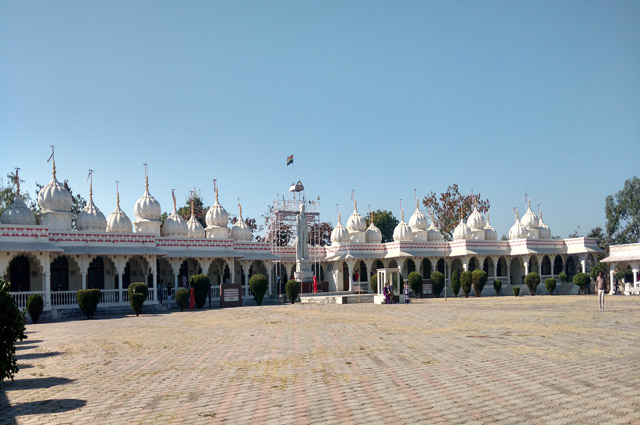Introduction: Discovering Gommatgiri Digambar Jain Temple in Indore
Many spiritual seekers and heritage enthusiasts often overlook the lesser-known Jain temples nestled in Madhya Pradesh’s countryside. For those yearning to explore Jainism’s rich history beyond the popular sites, the Gommatgiri Digambar Jain Temple of Indore offers a unique and enriching experience. This article delves into the temple’s history, architecture, and significance, providing insights for both devotees and cultural explorers.
Historical Significance of Gommatgiri Digambar Jain Temple
Gommatgiri, a small hillock located near Indore in Madhya Pradesh, is home to the Gommatgiri Digambar Jain Temple. The concept of establishing a Jain place of worship with an idol of Lord Bahubali was envisioned by the late Digambar Jain Acharya 108 Sri Vidyananda Muni Maharaj during his journey to Shravanabelagola in 1979. This vision was realized in 1981 when the government of Madhya Pradesh donated the land to the Jain community. The temple complex was developed under the guidance of community leaders such as Dulichand Sethi, Shantilal Patni, and Babulal Patodi.
Architectural Features of Gommatgiri Digambar Jain Temple
The Gommatgiri Digambar Jain Temple showcases traditional Jain architectural elements:
- Main Deity: A 21-foot-high stone idol of Lord Bahubali in Kayotsarga posture serves as the temple’s primary deity. This statue is a replica of the famous Bahubali statue at Shravanabelagola in Karnataka.
- 24 Tirthankar Temples: Adjacent to the main idol are 24 marble temples, each dedicated to one of the 24 Tirthankaras of Jainism. The idols are installed in separate sanctum sanctorums with individual shikharas, and their colors correspond to descriptions in Jain scriptures.
- Manastambha: A 41-foot-high Manastambha (pillar of honor) stands in front of the Bahubali idol, symbolizing humility and devotion.
- Additional Structures: The complex also includes the Adinath Jinalaya, housing an idol of Lord Adinath; the Hrim Mandir, featuring metal formations of the Hrim symbol with Tirthankar idols; and the Saraswati Parisar, a repository of rare Jain texts studied by scholars and monks.
These architectural elements not only enhance the temple’s aesthetic appeal but also reflect the deep-rooted Jain traditions of the region.
Religious and Cultural Importance
The Gommatgiri Digambar Jain Temple is more than just a place of worship; it is a cultural hub for the local Jain community. The temple hosts various festivals and rituals that foster a sense of unity and spiritual growth among devotees. The presence of idols representing all 24 Tirthankaras emphasizes the comprehensive nature of Jain philosophy.
Visiting Gommatgiri Digambar Jain Temple
Location: Gommatgiri, Nainod Village, Indore, Madhya Pradesh, India
Accessibility:
- Gommatgiri is located approximately 15 kilometers from Indore Railway Station and Bus Station, and about 6 kilometers from Indore Airport.
- The temple is accessible via local roads connecting to major parts of Indore.
- Private buses, taxis, and auto-rickshaws can easily reach the temple.
Timings:
- The temple is open daily from 6:00 AM to 7:00 PM.
Best Time to Visit:
- During Jain festivals or annual temple celebrations for an immersive cultural experience.
Conclusion
The Gommatgiri Digambar Jain Temple offers a serene and spiritually enriching experience, reflecting the profound heritage of Jainism in Madhya Pradesh. Its unique architecture and historical significance provide a distinctive insight into Jain art and devotion. Whether you’re a devout follower or a cultural enthusiast, a visit to this temple promises a meaningful journey into India’s diverse spiritual landscape.
This temple is not just a structure; it is a reminder of our roots, our peace, and our spiritual strength. If you ever get a chance, do visit. Even if you have never read a book about Jainism, your heart will understand the calm and truth this place offers.
